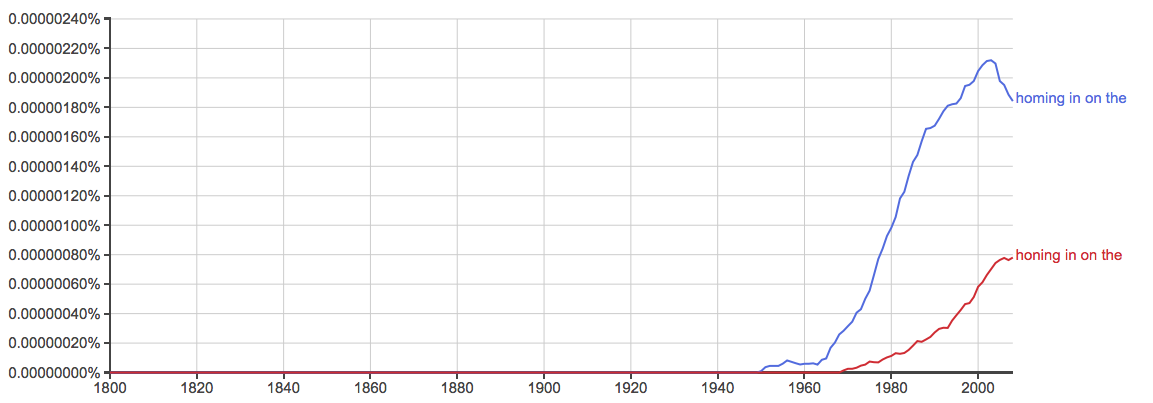There are many ways by which language changes over time. In many cases, speakers accidentally substitute one word for another. For whatever reason, the mistake catches on, and new expression becomes commonplace.
This particular vector of language change is called word-swapping. It refers to the substitution of one word for a homophone or near homophone, usually by accident.
That is exactly what took place between home in and hone in, two variants of a common phrasal verb. Continue reading to learn the full story, and to find out whether you should choose hone in or home in.
What is the Difference Between Home In and Hone In?
In this article, I will compare home in vs. hone in. I will outline the history of this phrase, and, at the end, I will discuss a helpful trick to remember when you’re having trouble deciding whether to use home in or hone in in your writing.
When to Use Home In
 What does home in mean? Home in is a phrasal verb. To home in on something is to narrow one’s focus or to grow nearer to a conclusion.
What does home in mean? Home in is a phrasal verb. To home in on something is to narrow one’s focus or to grow nearer to a conclusion.
Home in is the older, standard variant. According to Garner’s Modern American English, the original metaphor was derived from homing pigeons, and over the course of the 20th century it also became linked to aircraft and missiles.
See the examples below of this phrasal verb used in sentences.
- As the detective gathered clues, he began to home in on the solution to the mystery.
- The pigeon will home in on its destination and deliver the message.
- Today, Law buys much of her raw materials from the Dutch, often homing in on whichever variety might have been over-grown that year in order to reduce her environmental footprint. –Newsweek
- Since the Tesla crash, U.S. lawmakers, safety advocates and others have begun homing in on how car companies describe their autonomous-driving systems. –The Wall Street Journal
When to Use Hone In
What does hone in mean? Hone in is variant spelling of the same phrasal verb. It grew to prominence through word-swapping in the late 20th century. Despite its ubiquitous use in spoken American English, it is still considered a substandard variant in both American and British English.
As you can see from the below graph, it still trails home in in written English throughout the world. The graph is even more pronounced if you select only British English writings.

This graph is not perfect. It only draws from books written in English since 1800, ignoring other print sources and spoken language on the whole. Still, it is useful for identifying a long term trend.
Trick to Remember the Difference
 Here is a helpful trick to remember hone is vs. home in.
Here is a helpful trick to remember hone is vs. home in.
Hone in is common in spoken American English, but in written English home in is still the preferred spelling. Since home in is the standard form, you should use it, especially in academic and professional writing.
If you were writing fiction, and you wanted to craft believable dialogue that captures the way an ordinary American might speak, choosing hone in over home in might help you achieve that goal. In other contexts, however, avoid using hone in.
You can remember that home in is standard by imagining the original metaphor of the homing pigeon. A pigeon flies back to its home, not its hone. By using this trick, you’ll always know that home in is the correct variant of this phrase.
Summary
Is it home in or hone in? Home in and hone in are two variants of a phrasal verb that means to narrow one’s focus or to grow nearer to a conclusion.
It was originally a metaphor related to homing pigeons. If you keep this metaphor in mind, you will always be able to remember that home in is the standard form and that you should avoid hone in for academic and professional writing.
Contents
